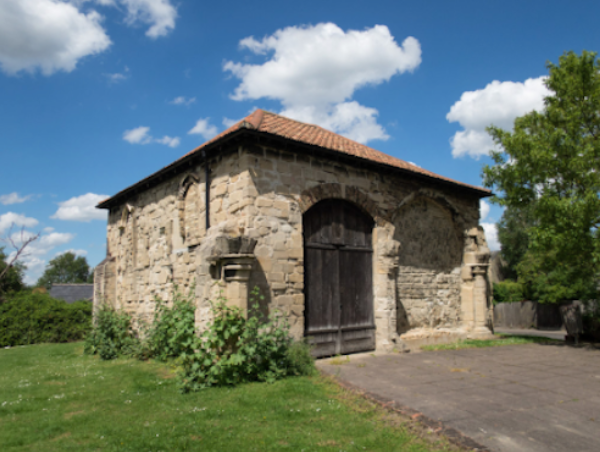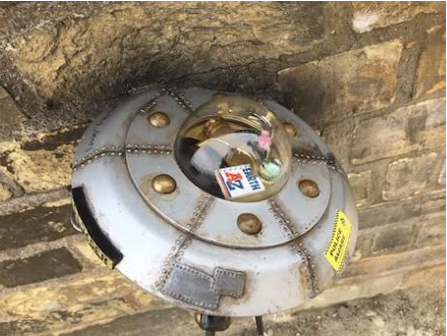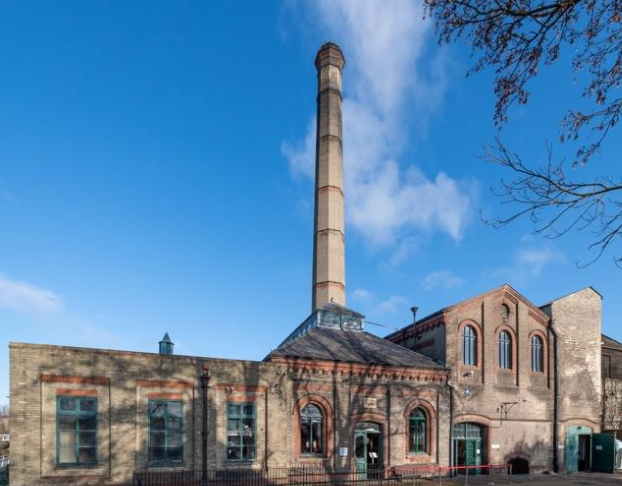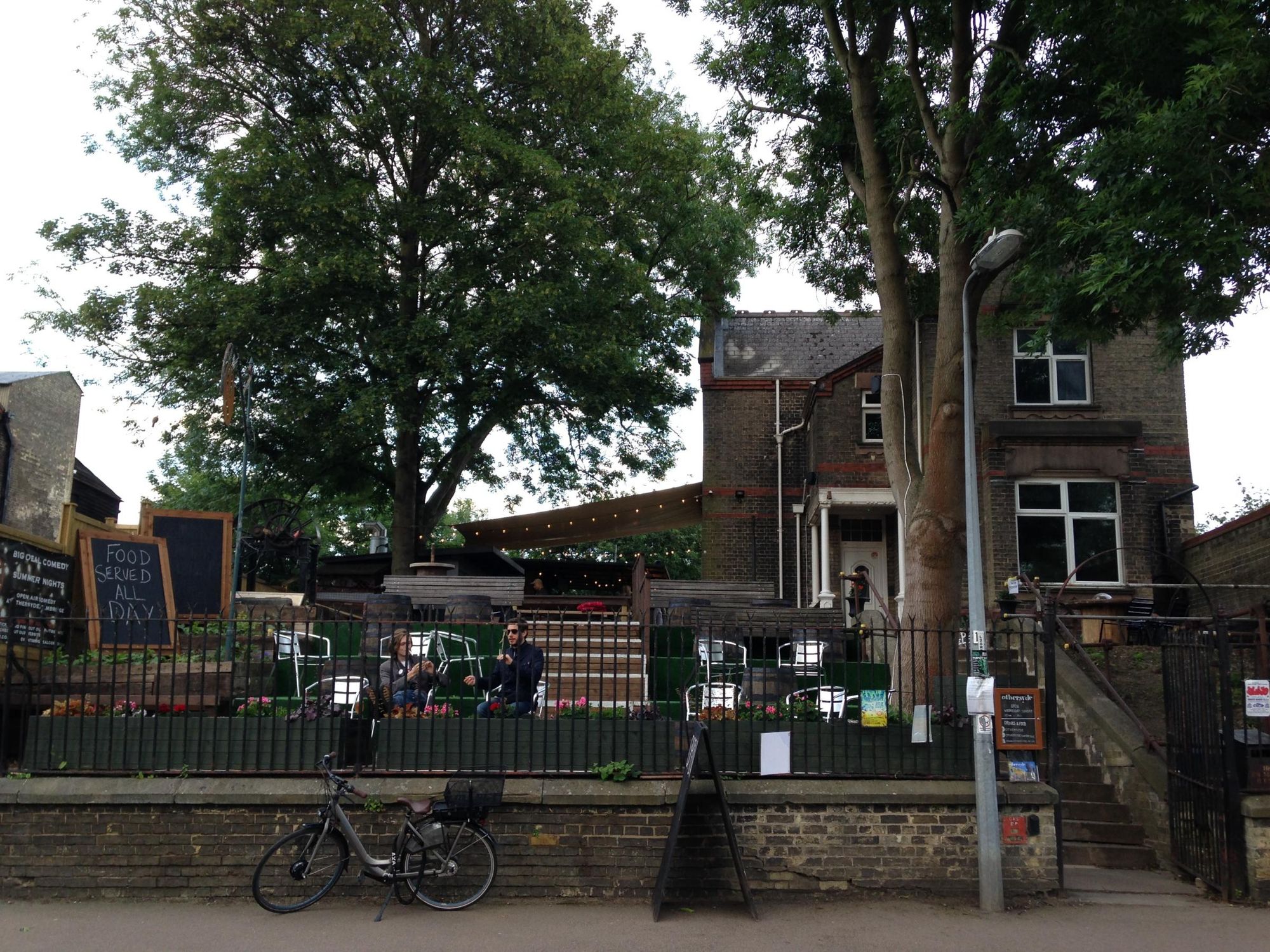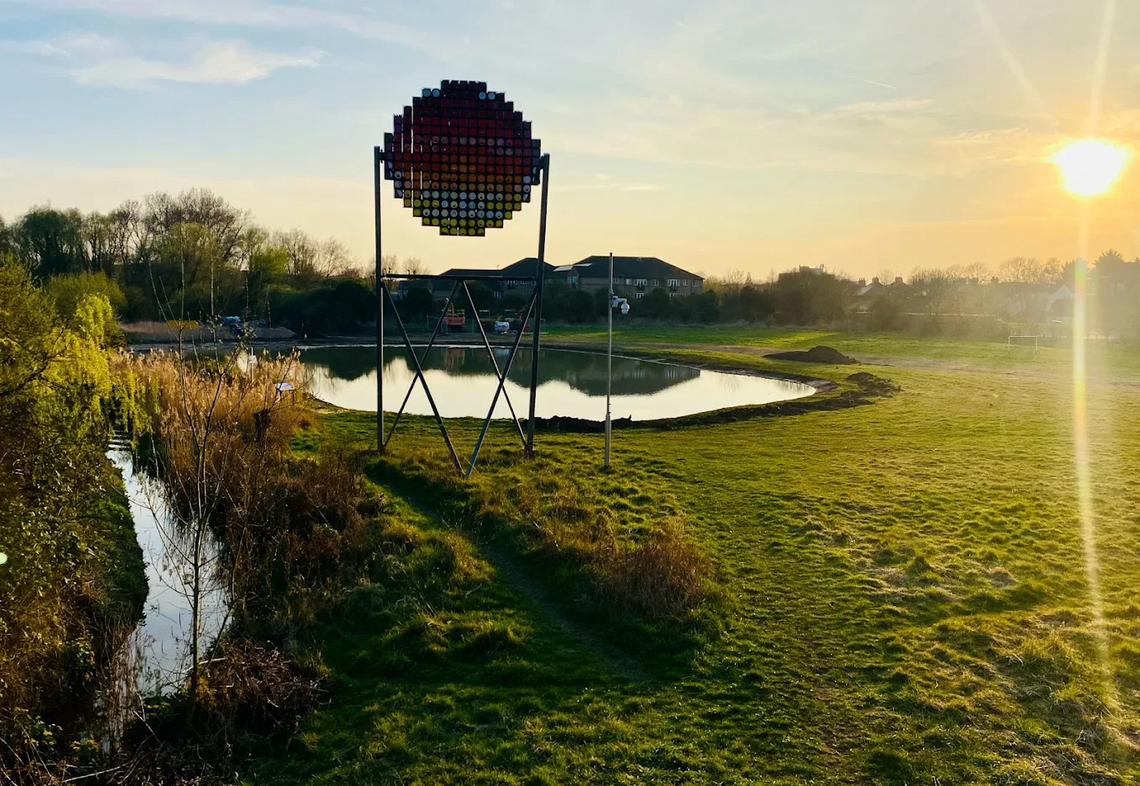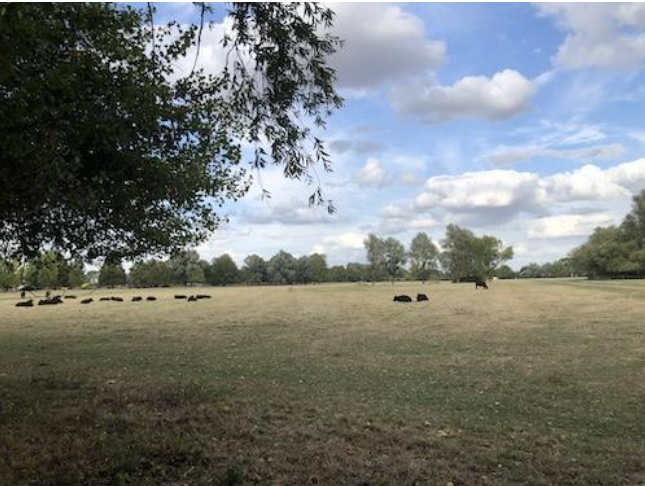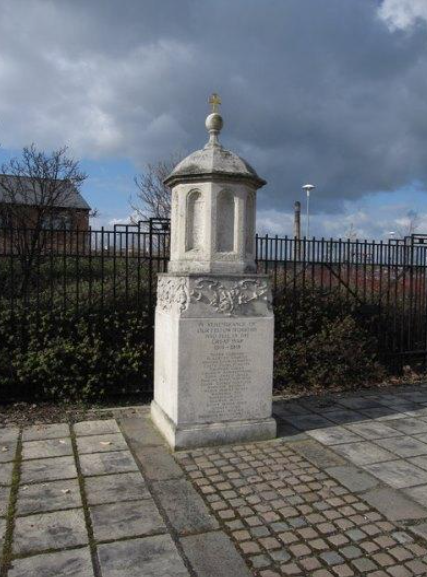Along with our partners, the Riverside Area Residents' Association (RARA), we have aspirations to develop a Heritage Trail that highlights the rich history of our area. Whilst our ambitions involve plaques and even an app eventually, here's a suggested route that includes the sites of this special place you can do now. It is a fascinating destination away from the ‘classic’ Cambridge sights:
St Andrew the Less
We start, of course, with St Andrew the Less, which you can get to in ten minutes from town on the number 3 bus heading to Fison Road, getting off at Elizabeth Way (and walking won't take you much longer).
Currently closed (though we're working on it!), you can peer through the locked gates to see the south door, above which is the iconic depction of St Andrew with his crux decussata (X-shaped cross, or "saltire"), upon which tradition has it he was crucified.
Abbey House
Walk back in the direction of town, but soon take a right down Abbey Road. Abbey House, known as the most haunted house in Cambridge, is on the corner.
The oldest part of the house was built in 1578 in the old Priory grounds. The Priory buildings were demolished and most of the stone given to build Corpus Christi College. Later owners extended and improved Abbey House up to the 1780s. In 1886 the house and gardens were walled off, the Cellarer’s Chequer was given to Cambridge Antiquarian Society and the rest of the site was sold for housing. Abbey House is now home to a Buddhist community. It is open to the public one day every year, in September.
The Cellarer's Chequer
Turn right after Abbey House onto Beche Road. A little way down on the left you see the Cellarer's Chequer, the only building of the original Barnwell Priory to have survived the dissolution in 1538, predating St Andrew the Less by about 100 years.
It is an attractive single-vaulted chamber, built between 1213 and 1265. It may have been used as a store or barn due to its close proximity to Abbey House. The Cellarer made sure the Priory had the provisions it needed week to week. The Chequer was where he conducted his business and was also a trading point with villagers and suppliers. It is now owned by Cambridge City Council. Visitors can see inside one day each year, on the Abbey House open day. The grounds are now used for monthly Sunday gatherings during warmer months, bringing together residents of all ages.
Dinky Doors
Running down the right hand side of the Cellarer's Chequer is Priory Road. On the corner of the river end of it you will see our spiky pillar box and the first of our Dinky Doors.
Dinky Doors’ unique miniature sculptures are an increasingly popular feature of Cambridge, and Riverside has two: the first is the ‘emailerator’ next to the postbox. The Riverside pillar box is a rare ‘anonymous’ model as it lacks the royal cypher and the words “Post Office”, made all the more unusual because of the spikes on top. It is thought to have been located by the Riverside gasworks originally and that spikes were added to stop people using it to climb over the gasworks wall.
Our second Dinky Door is outside the Cambridge Museum of Technology.
The Cambridge Museum of Technology
Turn right along the river and soon you come across the Cambridge Museum of Technology.
By the late 19th century Riverside was an overcrowded working-class district, widely viewed as a den of crime and vice. It was also where all the sewage of Cambridge washed up. In 1894 a fine pumping and waste destructor station was built – an early energy recycling plant. It burned domestic waste to power boilers which pumped the town’s sewage away for treatment. The two engines in the main engine room pumped non-stop for 74 years, 24 hours a day, 7 days a week, until the site shut down in 1968. They are the last of their kind in the world. The museum is holds regular steam days and displays celebrating local industry, including the huge gasworks that once dominated the area and the world-leading Pye company over the river, a vital early contributor to the Cambridge Phenomenon of high tech industry.
The Cambridge Museum of Technology is now a thriving museum with regular steam days and well worth a visit. See https://www.museumoftechnology.com/ for details.
The Engineer's House and Kerb Kollective
Part of the same complex as the Cambridge Museum of Technology.
The Museum of Technology hosts two local businesses which provide food, drink and excellent views of the river. The Engineer's House was built in 1898 to house the first Engineer of the Pumping Station. After decades of use as council accommodation it was reunited with the Museum and refurbished. It now houses a popular bar and pizza business. Next door, the Kerb Kollective is a thriving café and bakery with outdoor tables - so maybe time for some refreshment.
Olaudah Equiano Bridge and access to Logan’s Meadow
A little further up the river you will see the Olaudah Equiano Bridge.
This attractive bridge connects Riverside to Logan’s Meadow across the river. Built in 2007 following a design competition, it was renamed in 2022 after Olaudah Equiano who bought his freedom from slavery and was a leader in the anti-slave trade movement in the UK. He is generally acknowledged as the first political activist within Britain’s African community in the 18th century. He lived and married in Cambridge. There is a moving memorial to his daughter at Chesterton Church.
DETOUR: Logan’s Meadow nature reserve
You may want to take a small detour to the beautiful Logan's Meadow nature reserve across the river - but make sure you cross back to coninue the Heritage Trail.
Formerly a grazing marsh, Logan’s Meadow lies just across the river from the Riverside area and offers a delightful detour for nature lovers. It was designated as a local nature reserve in 2005. In 2025 the City Council constructed two major new ponds, encouraging new wetland wildlife such as reed warblers, water vole, kingfishers, reed specialist moths and Daubenton’s bats. The colourful Swift Tower sculpture was constructed in 2011 and aims to provide a home for up to 150 swifts. Swift calls are played from the tower in early summer to attract young returning birds to nest. The Friends of Logan’s Meadow are very active, and run bat walks and moth identification events among others.
Stourbridge Common
Back on the south side of the river, continue along the road until you reach Stourbridge Common.
The Common is both part of the pedestrian and cycle corridor through Riverside, and a vital amenity in its own right for dog-walkers, runners and lovers of peace. Stourbridge Fair was set up as a fundraiser for the leper hospital of St Mary Magdalene (now commonly known as the Leper Chapel). Helped by its location near the River Cam, then navigable by sea barges from the Wash, and the Newmarket Road, it became one of the biggest fairs in Europe, lasting for almost 2 months each year at its peak. John Bunyan, Daniel Defoe, Samuel Pepys and William Thackeray all mention the fair, and Isaac Newton bought the prism there that led to his theory of optics. Many street names nearby have their origins in items traded at the fair, such as Oyster Row, Garlic Row, Mercers Row and Cheddars Lane.
The Leper Chapel
From Stourbridge Common you have a choice to go the scenic, longer route - further along the river, turning right once you have passed under the railway bridge and following the path to the main road, where you will have the Leper Chapel on your right. Or, cut through the industrial estate by taking the first path on your right as your enter the commonn, up Garlic Row and left onto Newmarket Road. A few minutes walk and you reach the Leper Chapel.
Known locally as the Leper Chapel, this 12th-century building is Grade I Listed and forms a beautiful oasis just off Newmarket Road. It is the only building that remains of the Hospital of St Mary Magdalene, which was located well away from the town to treat lepers. It is one of the best surviving examples of a Norman chapel in England, with much of its original structure intact. The chapel is significant for another reason as in 1199 King John granted the hospital a licence to hold Stourbridge Fair as a fundraiser. The fair’s success went far beyond fundraising: along with the university it is credited with helping make Cambridge so prosperous. The Chapel hosts occasional theatrical performances and is open on alternate Sundays to the public. On the first Saturday in September it is the venue for a re-enactment of Stourbridge Fair https://cambridgeppf.org/etn/leper-chapel-open-day-10-2/ .
Cambridge Gas Company War Memorial
If, rather than hopping on a bus, you choose to walk back into town along Newmarket Road, you will come across this war memorial on your right.
Little trace remains now of the huge gasworks that once towered over Riverside – only this memorial. Now a Grade II listed monument, it was first erected in 1921 and pays tribute to the 22 gasworks employees who died in two World Wars. It was relocated to Newmarket Road in 2003 when the site was redeveloped into a Tesco supermarket and apartments.



